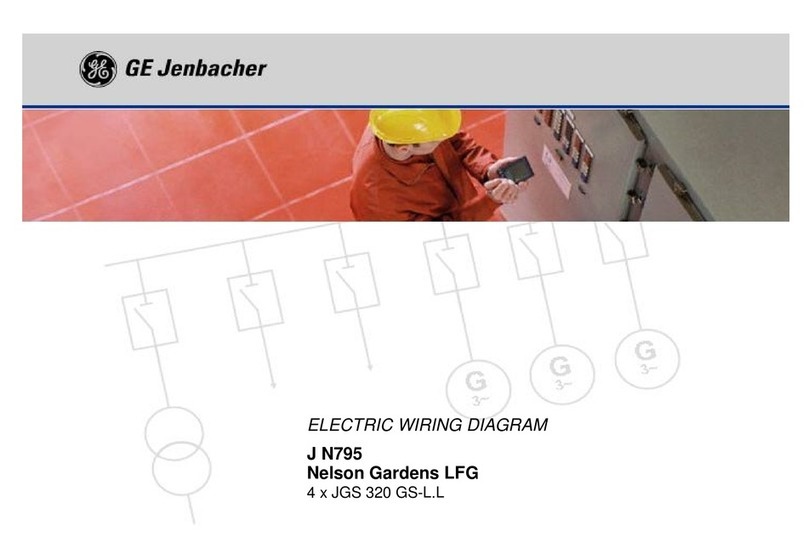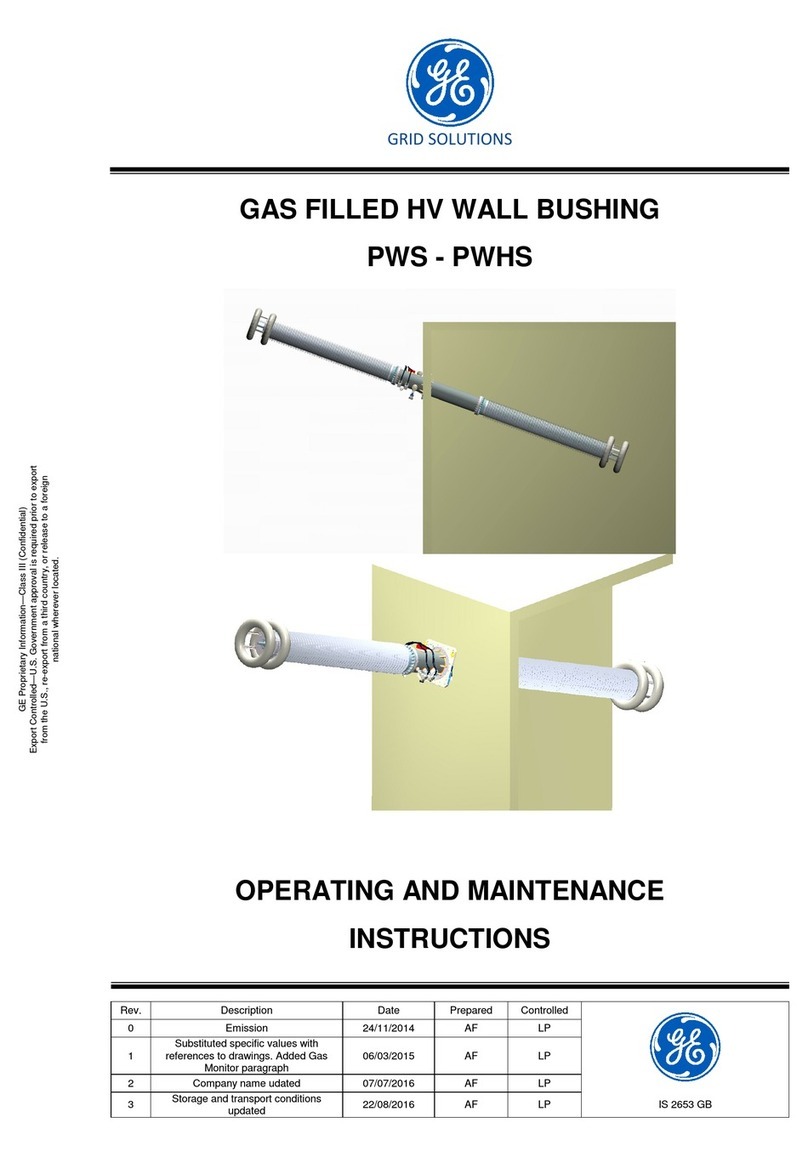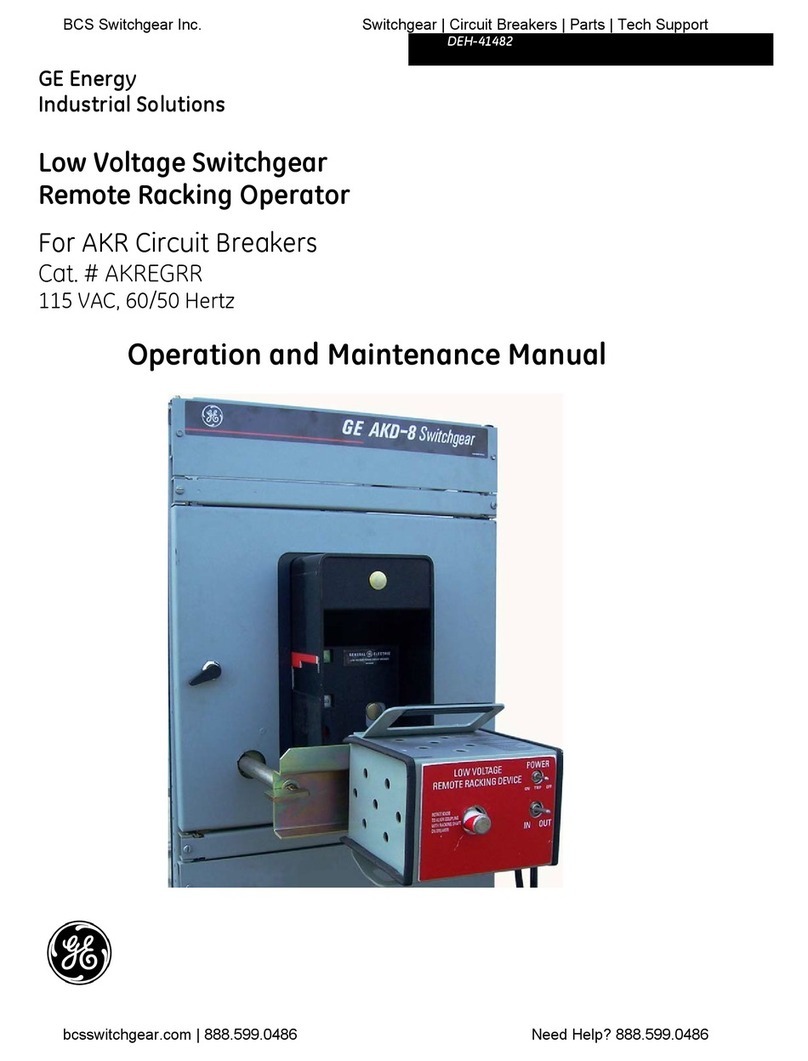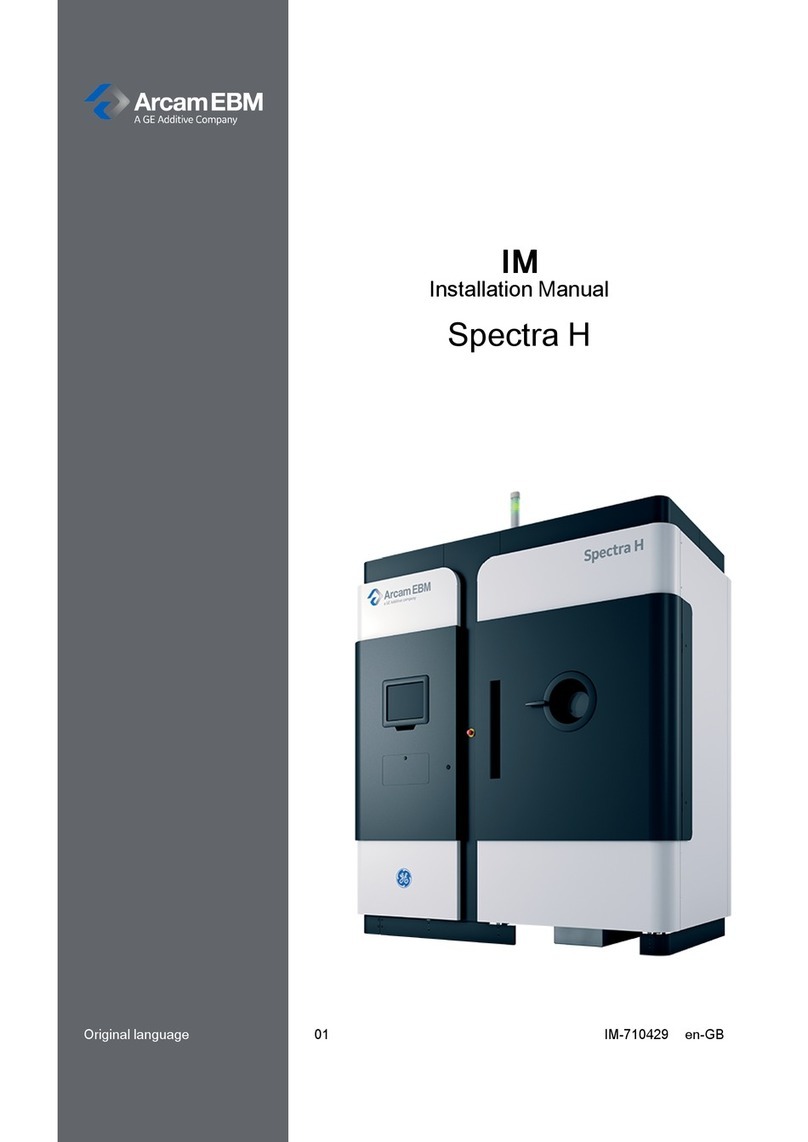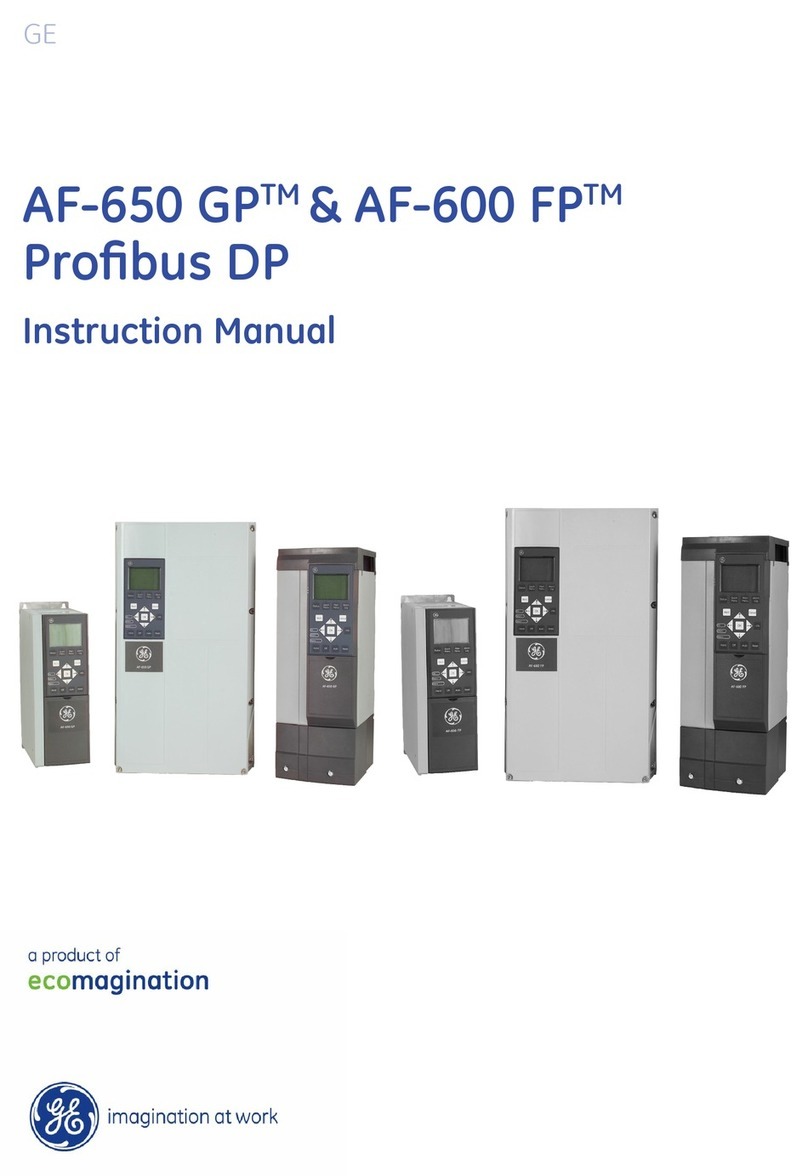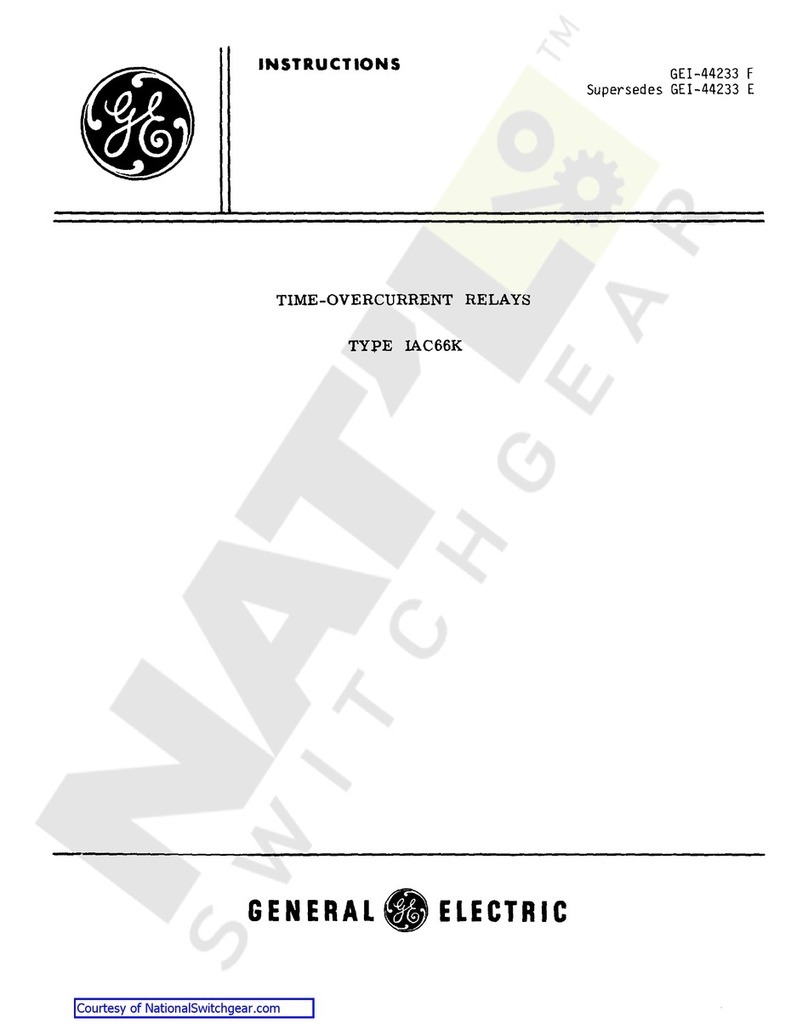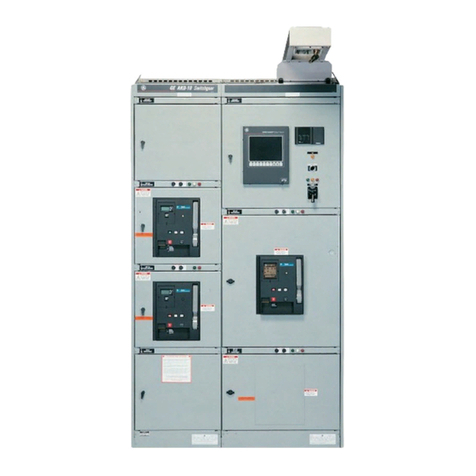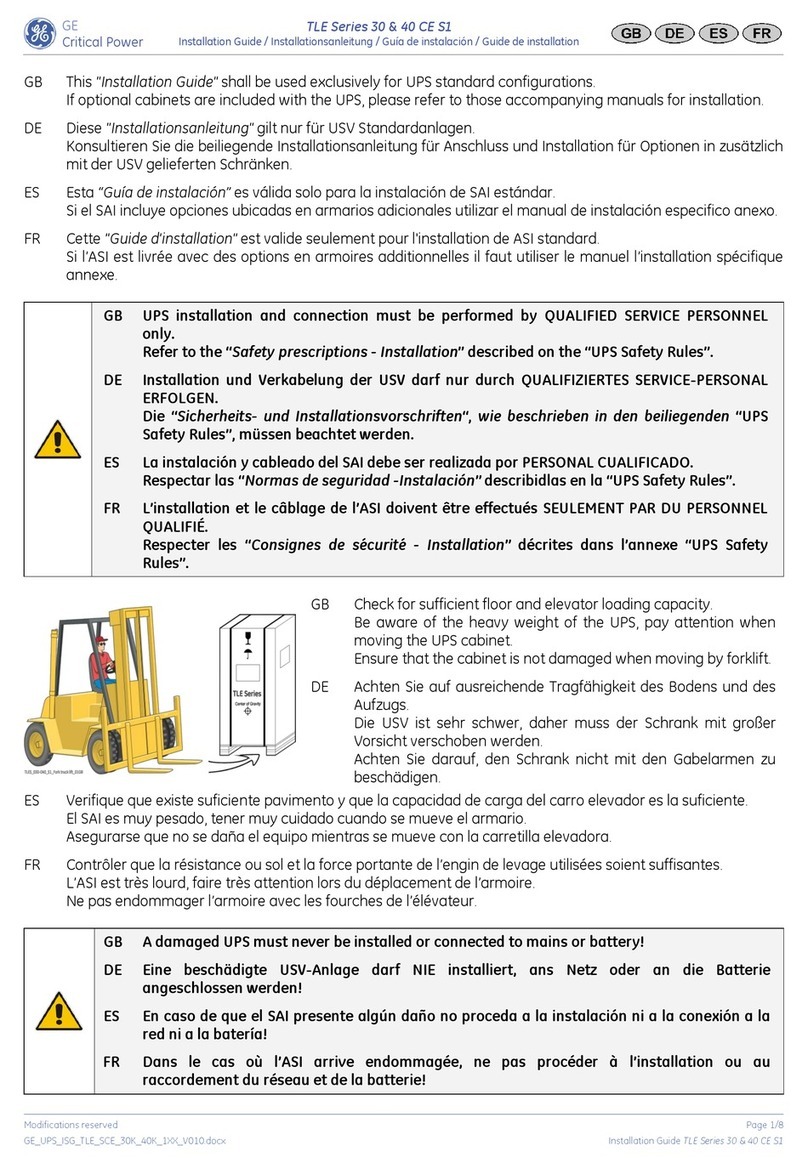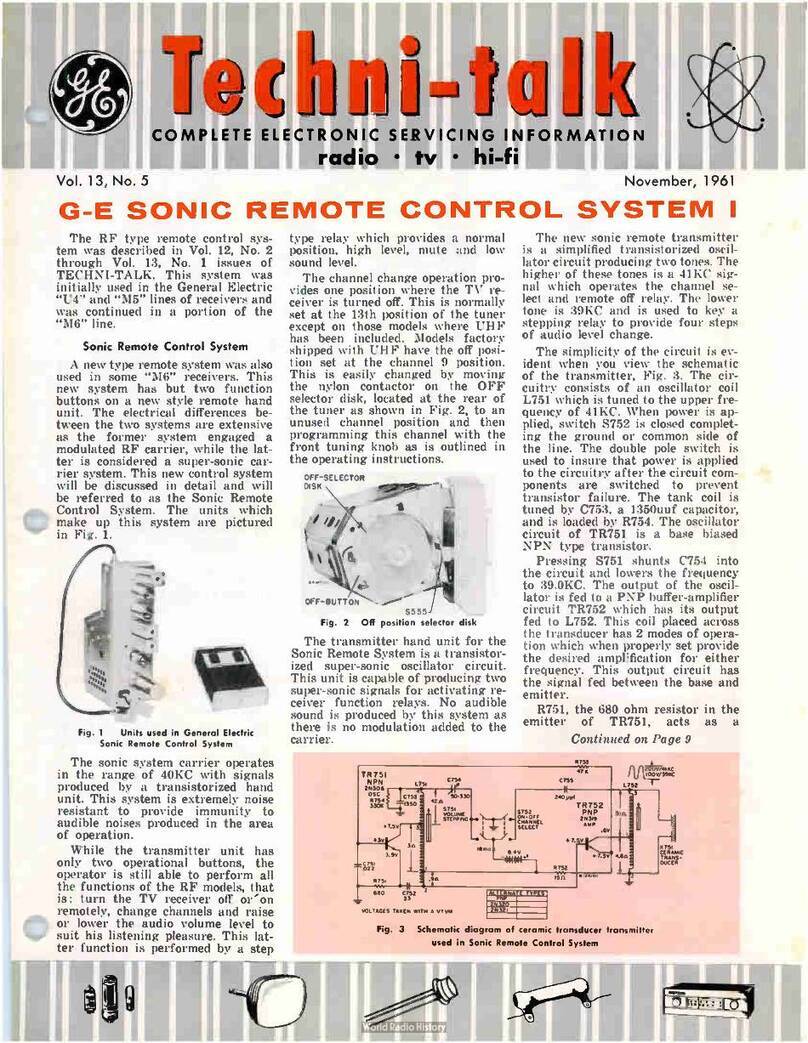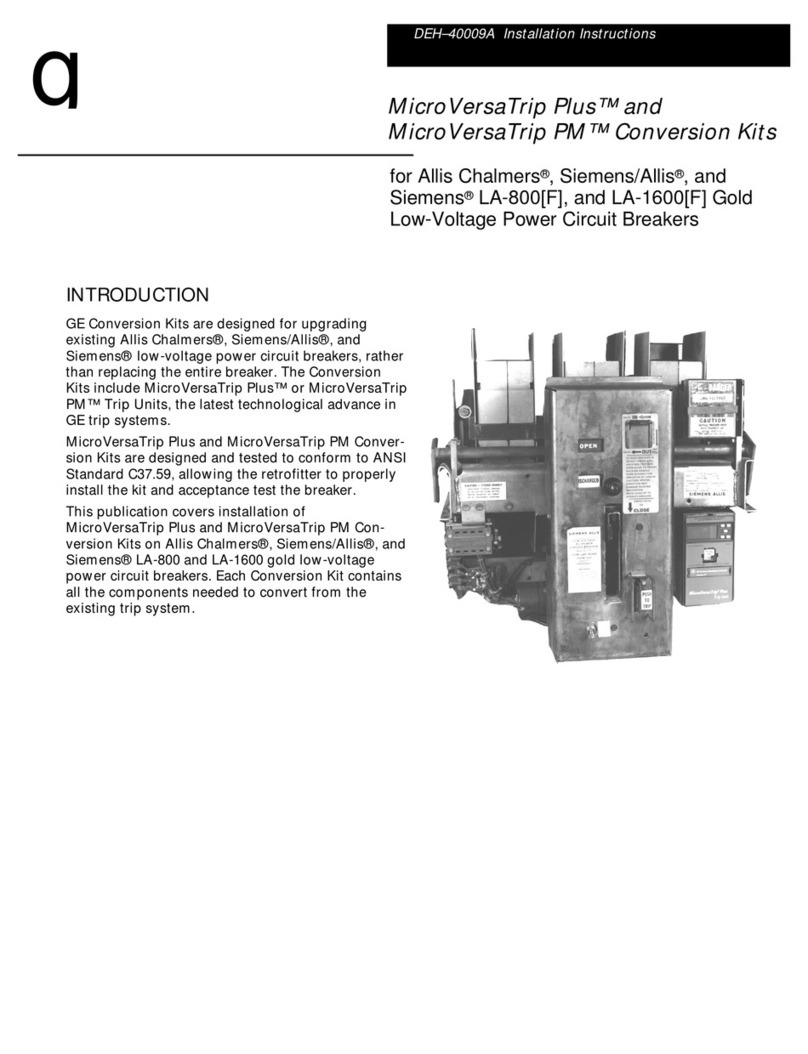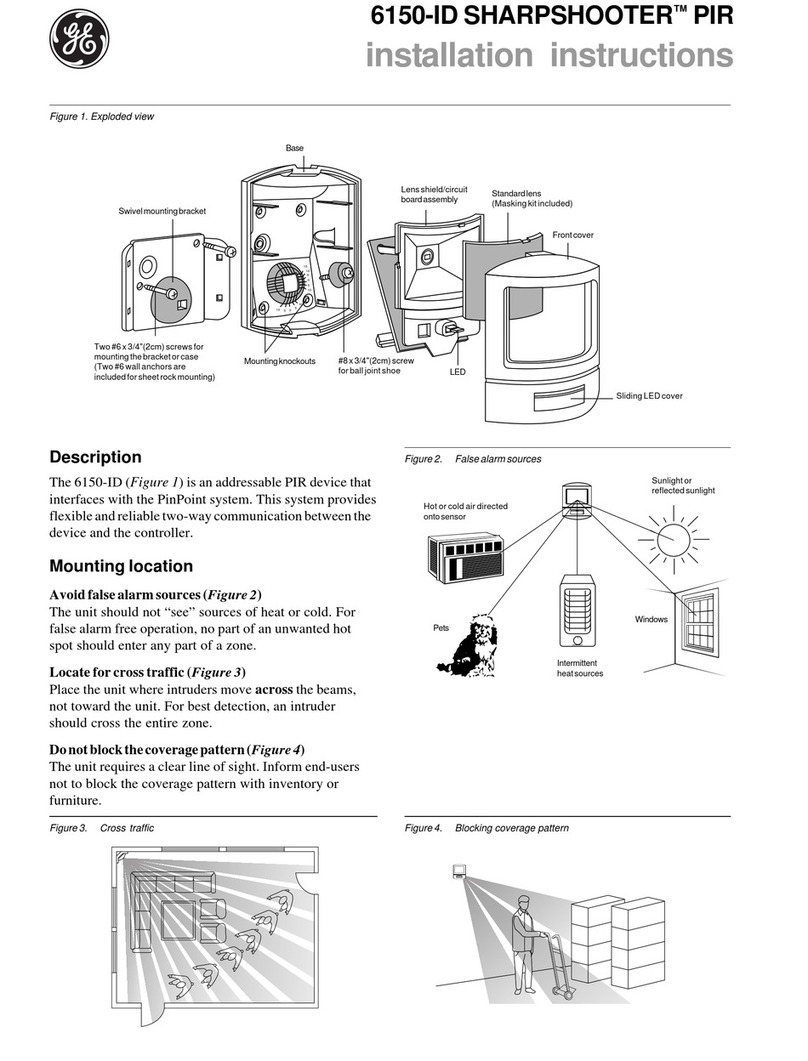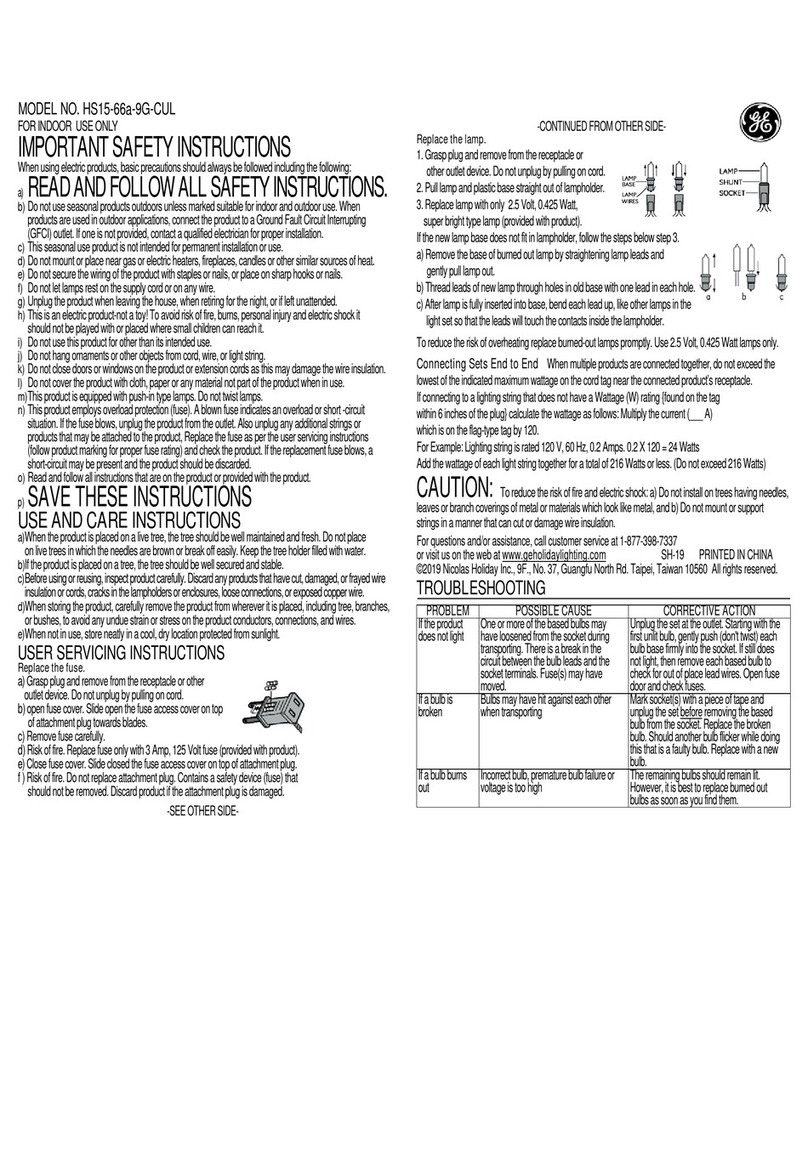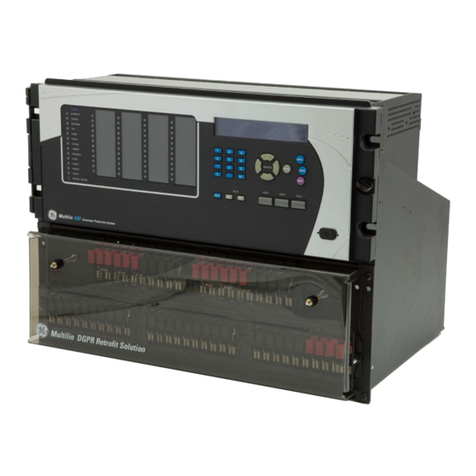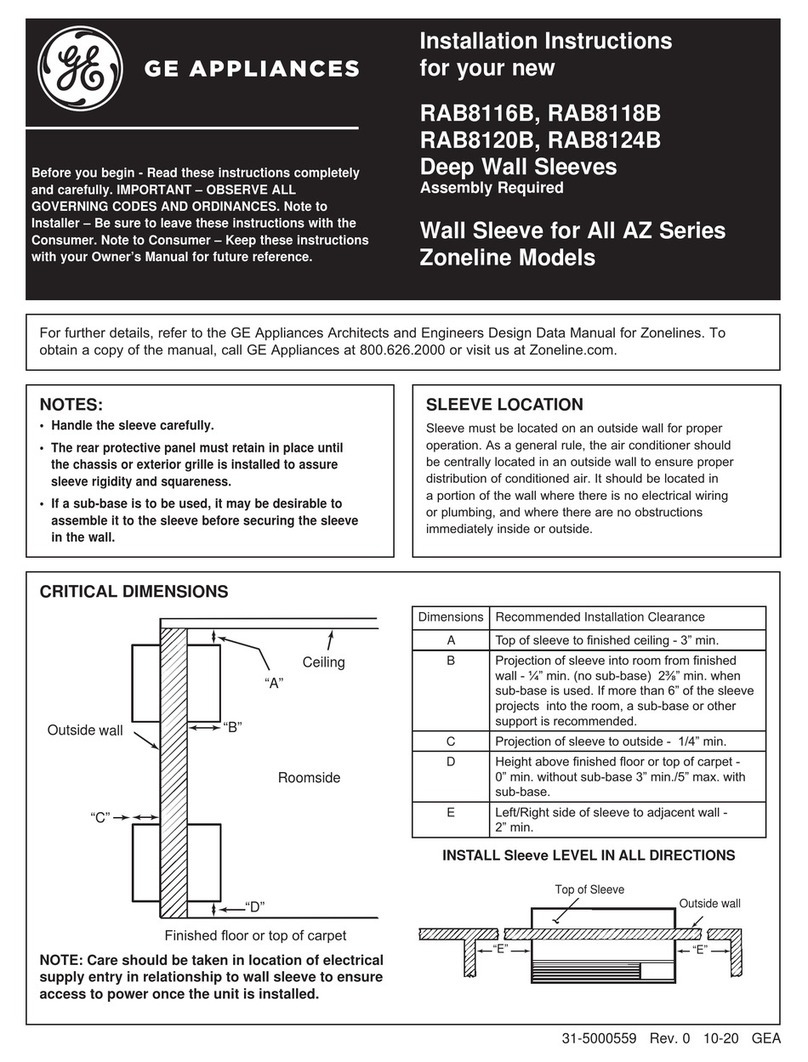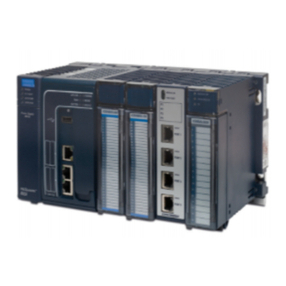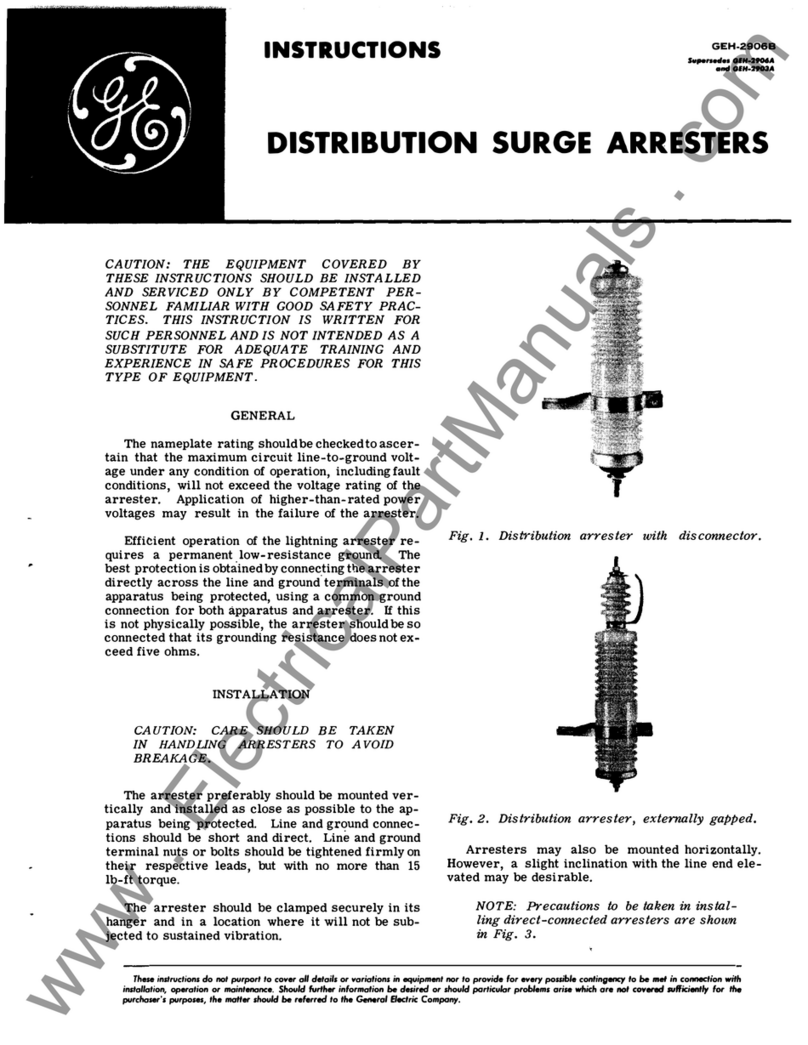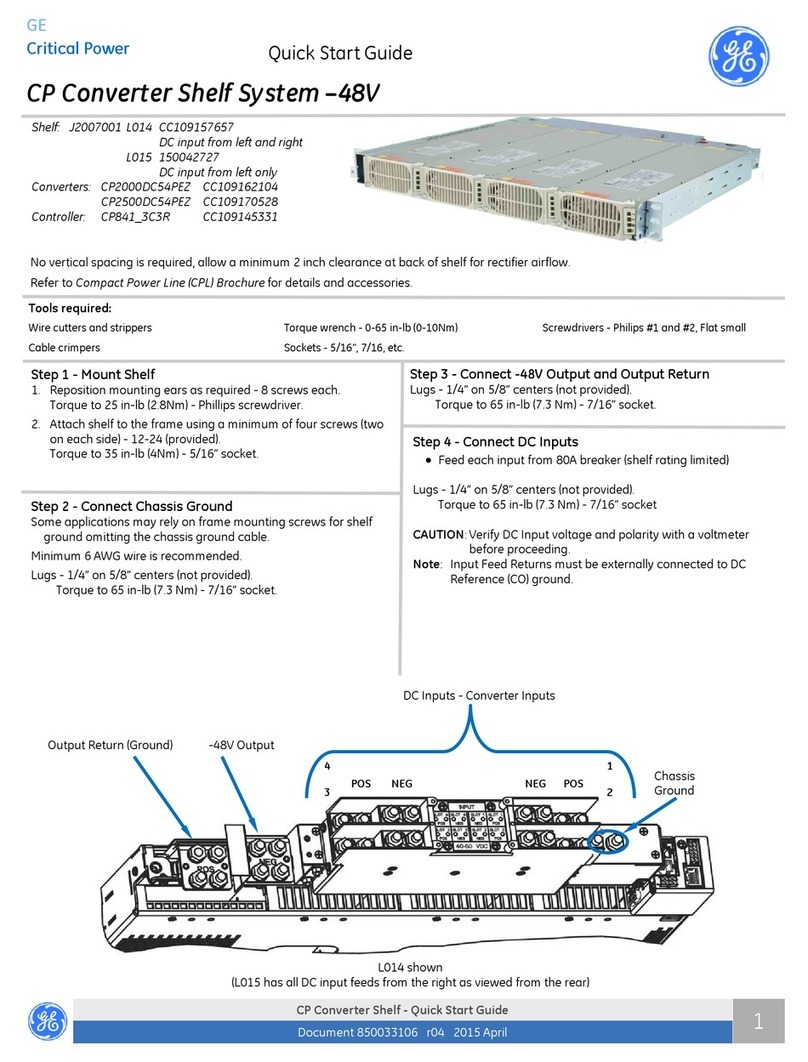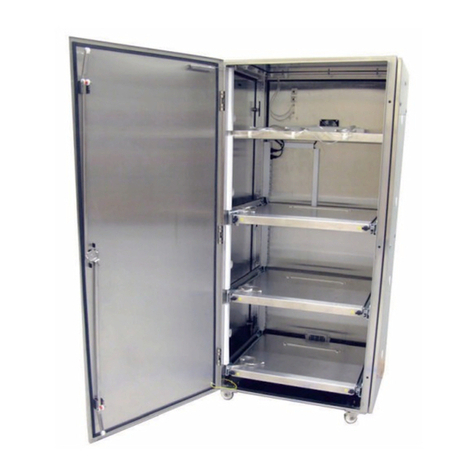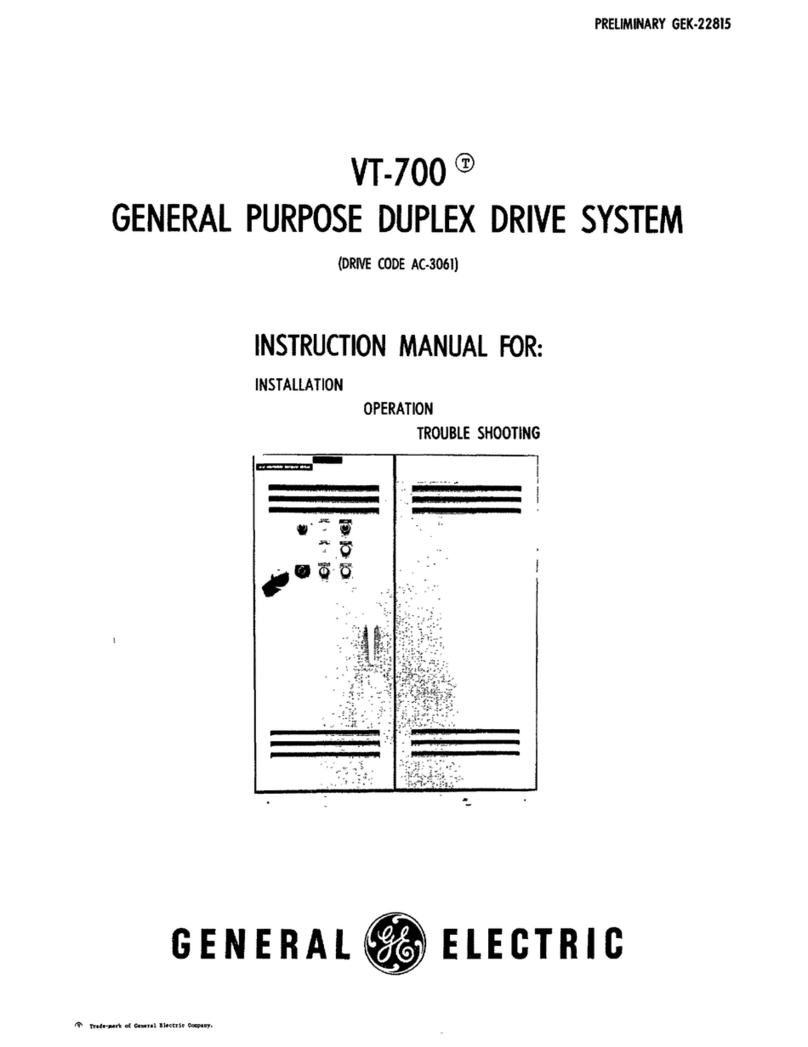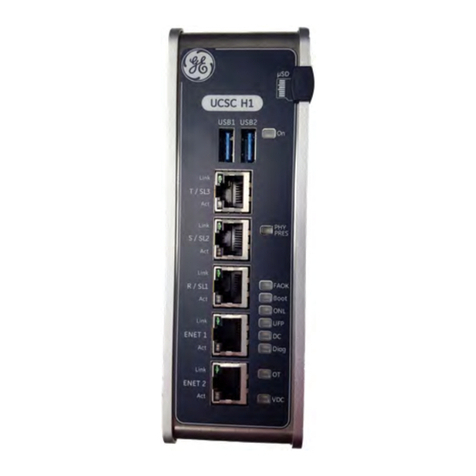
© 2016 General Electric. All rights reserved. i
Table of Contents
General Information ................................................................... iii
Hazard Classifications .............................................................................iii
Trademarks................................................................................... iii
Warranty .............................................................................iii
Section 1. Introduction ................................................................1
General Information.................................................................................. 1
Instruction Manual Arrangement....................................................... 1
Section 1, Introduction....................................................................... 1
Section 2, Receiving, Handling, and Storage.......................... 1
Section 3, Switchgear Description...............................................1
Section 4, Equipment Installation.................................................1
Section 5, Exhaust Plenum Installation.....................................1
Section 6, Installing and Removing Circuit Breakers ......... 1
Section 7, Testing and Inspecting ................................................ 1
Section 8, Operating the Switchgear..........................................2
Section 9, Energizing the Switchgear......................................... 2
Section 10, Maintaining the Switchgear................................... 2
Section 11, Common Switchgear Accessories and Kits... 2
Appendices A, B, C, D, E, F, and G .................................................2
Related Publications..................................................................................2
General Arrangement Drawings................................................... 2
Elementary and Connection Drawings ..................................... 2
Summary of Switchgear Equipment........................................... 2
Section 2. Receiving, Handling, and Storage...........................3
Receiving .........................................................................................................3
Equipment Packaging ........................................................................ 3
Inspecting for Damage......................................................................3
Filing a Claim...........................................................................................3
Handling ..........................................................................................................4
Indoor Enclosure Lifting.....................................................................4
Rollers..........................................................................................................5
Forklifts....................................................................................................... 5
Storage............................................................................................................. 6
Switchgear ...............................................................................................6
Circuit Breakers...................................................................................... 6
Exhaust Plenum Components........................................................6
Section 3. Switchgear Description ............................................7
General.............................................................................................................7
Summary Description............................................................................... 8
Front Compartments ............................................................................. 10
Instrument Panel (AKD-20 AR Only) ......................................... 10
Circuit Breaker Control Fuse Panel (Entellisys AR Only) . 10
EntelliGuard Messenger (Entellisys AR Only)........................ 10
Instrument/Auxiliary Compartment......................................... 10
Entellisys Instrument/Auxiliary Compartment (Entellisys
AR Only) ................................................................................................... 11
Auxiliary/Transition Sections ....................................................... 11
Circuit Breaker Compartments......................................................... 12
Primary Disconnect Shutter ......................................................... 14
Breaker Compartment Door ........................................................ 15
Future Circuit Breaker Compartment ..................................... 15
Circuit Breakers......................................................................................... 16
Bus Area........................................................................................................ 17
Busing System..................................................................................... 17
Insulated/Isolated Bus System ................................................... 18
Cable Compartment ...............................................................................19
Cable Compartment Floor Plates...............................................19
Ground Bus ............................................................................................20
Heaters.....................................................................................................20
Section 4. Equipment Installation ...........................................21
General...........................................................................................................21
Site Location................................................................................................21
Foundation Requirements...................................................................21
Foundation Preparation........................................................................22
Indoor Equipment...............................................................................22
Assembly and Installation of Switchgear ....................................25
General.....................................................................................................25
Detailed Assembly and Installation Instructions ...............25
Switchgear Anchoring .....................................................................29
External Control Wire Connections...........................................30
Power Cable Connections..............................................................31
Relay and Control Devices.............................................................31
Breaker Lifting Device ............................................................................32
Indoor Equipment...............................................................................32
Rear Door Ventilation .............................................................................35
Wall Mounted HMI (Entellisys AR Only)..........................................36
General.....................................................................................................36
Installation..............................................................................................36
Wiring........................................................................................................36
Section 5. Exhaust Plenum Installation..................................37
General...........................................................................................................37
Installation....................................................................................................38
Exhaust Plenum above Switchgear..........................................38
Exhaust Plenum End Cap ...............................................................40
Exhaust Plenum End Portal...........................................................40
Plenum System between Equipment and End Portal .....41
Section 6. Installing and Removing Circuit Breakers ..........42
General...........................................................................................................42
Circuit Breaker Identification..............................................................42
Rejection Feature......................................................................................42
Installing a Circuit Breaker...................................................................43
General.....................................................................................................43
Installation Procedure......................................................................43
Removing a Circuit Breaker ................................................................45
Section 7. Testing and Inspecting ...........................................46
General...........................................................................................................46
Key Interlocks .............................................................................................46
Breaker Operation Test .........................................................................46
EntelliGuard Trip Units (AKD-20 AR Only) ...............................46
Entellisys System Test Kit (Entellisys AR Only)......................47
Final Steps to be taken Before Energizing Equipment..........47
Section 8. Operating the Switchgear......................................48
General...........................................................................................................48
Manually Operated Circuit Breakers ..............................................48
Closing Operation...............................................................................48
Opening Operation ............................................................................48
Electrically Operated Circuit Breakers...........................................48
Closing Operation...............................................................................48
Opening Operation ............................................................................48
Circuit Breaker Draw-out Operation ..............................................49
Courtesy of NationalSwitchgear.com
